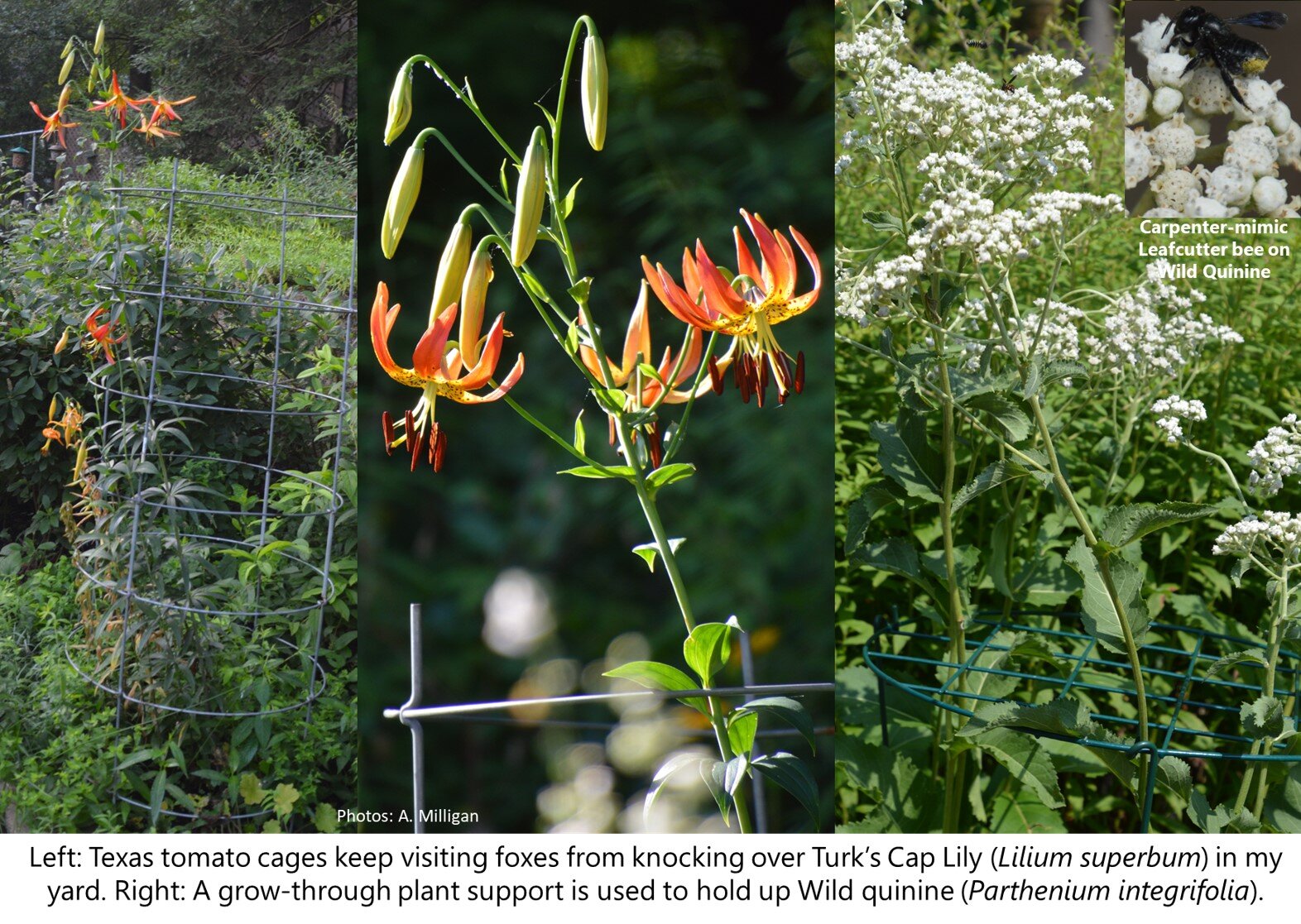How Are You Holding Up?
When people visit my home, I often hear them say, “You have so many tall plants! How do you keep them from falling over?” As a native plant enthusiast, I don’t limit myself to just short plants – instead, I strive for biodiversity and finding the right plant to fit a site; frequently that means planting one of the excellent, very tall perennials that Maryland is known for. Over the years I have had to get creative to find ways to keep my plants standing tall while withstanding increasingly extreme weather. September is the wettest month of the year in Maryland and as we move further into hurricane season, I need to anticipate storms that can wreak havoc on a garden.
Like many of you, I do most of the cleanup of my garden in early spring – rather than cutting plants back after blooming, I keep the seed heads of most plants available for birds and to provide overwintering areas for insects and the like. Below are a few of the techniques I use to hold up plants in my garden:
Providing support for tall plants in your yard is important but in this time of coronavirus the more important question is, “How are you holding up?” I miss spending time with my gardening and Watershed Steward friends. I can only hope you are all staying safe and that we will soon be able to get together again. Hopefully, like my Joe-Pye Weed, you are staying strong and providing your own support to a friend or neighbor. In the meantime, I will imagine you all doing a bit of native plant gardening.
~ Alison Milligan – Mstr. Gardener/Mstr. Naturalist/Mstr. Watershed Steward
Chesapeake Bay Landscape Professional (CBLP)










